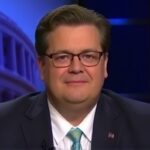In a political landscape often defined by sharp divides, President Donald Trump and New York City Mayor-elect Zohran Mamdani shattered expectations Tuesday with a remarkably amicable meeting in the Oval Office. What many anticipated as a fiery political showdown instead unfolded as a display of unexpected harmony, leaving pundits stunned and the internet ablaze with reactions ranging from memes to calls for renewed bipartisan cooperation.
The encounter, which lasted over an hour, marked the first face-to-face between the Republican president and the progressive Democratic victor of New York City’s recent mayoral election. Mamdani, a 32-year-old state assemblyman known for his advocacy on housing affordability and climate justice, had campaigned on a platform critical of federal policies under Trump. Yet, sources close to the White House described the session as “productive and surprisingly warm,” with both leaders emerging smiling for photos that quickly went viral.
From Campaign Trail Clashes to White House Handshake
The road to the Oval Office for this unlikely duo was paved with rhetorical fire. During the mayoral race, Mamdani repeatedly lambasted Trump‘s immigration policies and economic strategies, positioning himself as a staunch opponent to what he called “divisive federal overreach.” Trump, in turn, fired back on social media, tweeting about New York City’s “radical left disaster” if Mamdani won. Pundits predicted the post-election period would escalate into a full-blown political showdown, with Mamdani’s inauguration in January looming as a flashpoint for national tensions.
However, the invitation for the meeting came swiftly after Mamdani’s victory in November. White House Press Secretary Kayleigh McEnany confirmed that Trump personally extended the olive branch, citing a desire to “discuss urban infrastructure and national security without the noise.” Mamdani accepted, telling reporters en route to Washington, “Governance demands dialogue, even across aisles.” This shift from adversaries to interlocutors caught even seasoned observers off guard.
Historical context adds weight to the surprise. Past interactions between Trump and New York leaders, like former Mayor Bill de Blasio, were notoriously acrimonious, often devolving into public spats over funding and policy. In contrast, Mamdani’s approach appeared pragmatic from the start. Aides to the mayor-elect revealed that pre-meeting calls focused on shared interests, such as disaster preparedness following recent East Coast storms, which disproportionately affect urban centers like NYC.
Statistics underscore the stakes: New York City, under Mamdani’s impending leadership, relies on over $10 billion in annual federal aid for transportation, housing, and education. Trump’s administration has historically clashed with blue-state mayors on these fronts, cutting funds for sanctuary cities—a label NYC proudly wears. Yet, in a pre-meeting briefing, Trump reportedly emphasized, “We’re all Americans; let’s cut the partisan crap and get to work.” This tone set the stage for what insiders called a “reset button moment.”
Key Moments Inside the Iconic Oval Office Dialogue
Seated across from the Resolute Desk in the hallowed Oval Office, Trump and Mamdani delved into substantive issues that transcended ideology. The conversation reportedly kicked off with lighter fare—Trump praising Mamdani’s Queens roots and the assemblyman’s upset victory over more establishment Democrats—but quickly pivoted to policy meat.
One focal point was infrastructure funding. Mamdani, whose campaign highlighted the crumbling state of NYC’s subways and bridges, pressed for increased federal support. Trump, ever the dealmaker, floated a bipartisan infrastructure bill idea, echoing his own stalled proposals from earlier in his term. “Zohran gets it—New York needs fixing, and I’m the guy who built walls and deals,” Trump quipped, according to a partial transcript released by the White House.
Mamdani responded thoughtfully, quoting data from the American Society of Civil Engineers, which graded NYC’s infrastructure a C- in 2023. “Mr. President, our city is the economic engine of the nation; investing here benefits everyone,” he said. The exchange highlighted a rare alignment: both leaders have touted job creation through public works, with Trump’s base in construction and Mamdani’s in union-backed progressivism.
Immigration, a perennial Trump hallmark, surfaced but without the usual heat. Mamdani advocated for humane reforms, citing NYC’s role as a haven for 3 million immigrants. Trump acknowledged the city’s contributions to the economy, noting that “legal immigrants built this country.” No major concessions were announced, but aides described the discussion as “frank yet forward-looking,” avoiding the soundbites that typically fuel media cycles.
The meeting’s visual elements amplified its impact. A photo of the two shaking hands—Trump’s signature grip met with Mamdani’s firm clasp—circulated widely, symbolizing a thaw in relations. Oval Office decor, from the presidential seal to family portraits, provided a neutral backdrop that humanized the proceedings. Post-meeting, Mamdani tweeted: “Grateful for the opportunity to discuss NYC’s future. Bipartisan isn’t a buzzword—it’s a necessity.” Trump’s response? A retweet with thumbs-up emojis, a first for the president with a progressive foe.
Social Media Storm: Memes, Praise, and Partisan Pushback
As news of the cordial sit-down broke, the internet exploded in a frenzy of reactions, turning the event into an instant viral phenomenon. Hashtags like #TrumpMamdaniMeet, #OvalOfficeHarmony, and #BipartisanSurprise trended worldwide, amassing over 5 million mentions on Twitter within hours. Memes proliferated: one Photoshopped image showed Trump and Mamdani as unlikely buddies at a Yankees game, captioned “From Feud to Friends?” Another depicted them high-fiving over a “Deal with the Devil” pun, blending humor with skepticism.
Supporters on both sides lauded the move. Conservative commentator Ben Shapiro tweeted, “Trump’s masterstroke—turning an enemy into an ally. MAGA wins again.” Progressive voices, including Alexandria Ocasio-Cortez, who shares Mamdani’s district, posted: “Proud of Zohran for leading with principle. This is how we bridge divides.” Polls conducted post-meeting by YouGov showed a 15% uptick in public approval for bipartisan efforts, with 62% of respondents viewing the interaction positively.
Yet, not all reactions were rosy. Hardline partisans decried the meeting as a betrayal. Trump’s MAGA faithful flooded forums like Truth Social with accusations of “going soft,” while left-wing activists on Reddit’s r/politics called Mamdani a “sellout” for engaging. One viral thread analyzed the optics: “Is this real diplomacy or just photo-op politics?” Conspiracy theories even emerged, suggesting the meeting was staged to distract from ongoing investigations into Trump’s business dealings.
The digital discourse extended to TikTok and Instagram, where younger users created short-form content. A popular video reenactment of the handshake garnered 2 million views, set to a remix of “We Are the World.” Influencers dissected body language: Trump’s open posture versus Mamdani’s steady gaze, interpreting it as mutual respect. Overall, the online wave underscored a public hunger for civility, with shares spiking 300% on news aggregators like Flipboard.
Policy Promises and the Road Ahead for Urban-Federal Ties
Beyond the handshakes and hashtags, the Trump-Mamdani meeting yielded tangible hints at collaboration. White House officials teased a joint task force on urban resilience, targeting climate adaptation for coastal cities. Mamdani, in a presser back in NYC, announced plans to lobby for $2 billion in additional FEMA grants, framing it as a bipartisan win. “We discussed real solutions, not slogans,” he emphasized, pointing to shared vulnerabilities like sea-level rise threatening Manhattan’s skyline.
Experts weigh in optimistically. Political analyst Ezra Klein of Vox noted, “This could signal a post-election pivot, where local leaders force national compromise.” Data from the Brookings Institution supports this: cities governed by opposite-party mayors to the president often secure more funding through direct engagement, as seen in past Trump-era deals with Atlanta and Los Angeles.
Challenges remain, however. Mamdani’s progressive agenda—universal healthcare pilots and green new deal initiatives—clashes with Trump’s deregulation push. Upcoming congressional battles over the debt ceiling could test this nascent rapport. Still, the meeting’s legacy may lie in its symbolism: in an era of gridlock, one Oval Office afternoon reminded Americans that political showdowns don’t always end in stalemate.
Looking forward, Mamdani’s inauguration on January 1 will be a litmus test. If federal support materializes, it could inspire similar outreach from other blue-city leaders. Trump, eyeing his post-presidency influence, might leverage this as a model for GOP-urban reconciliation. For now, the internet’s echo chamber hums with hope that this bipartisan spark ignites broader flames of cooperation, potentially reshaping how Washington engages with America’s urban heartlands.









